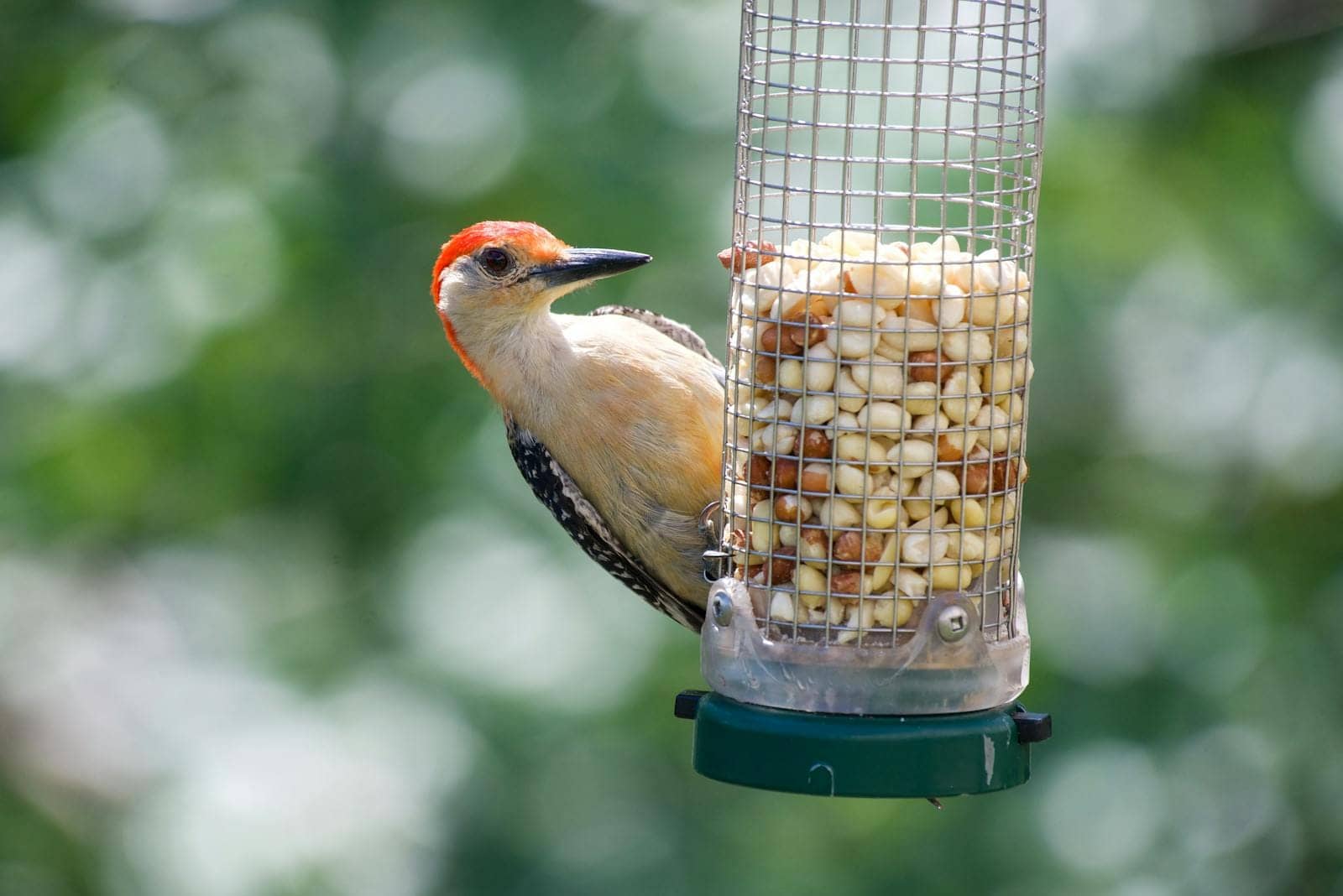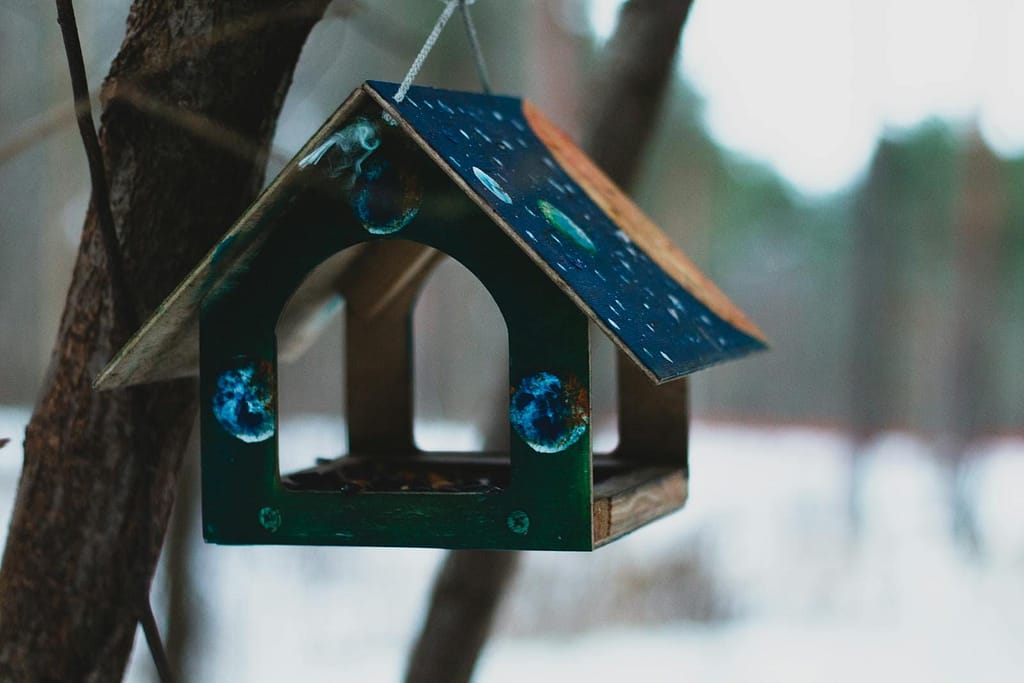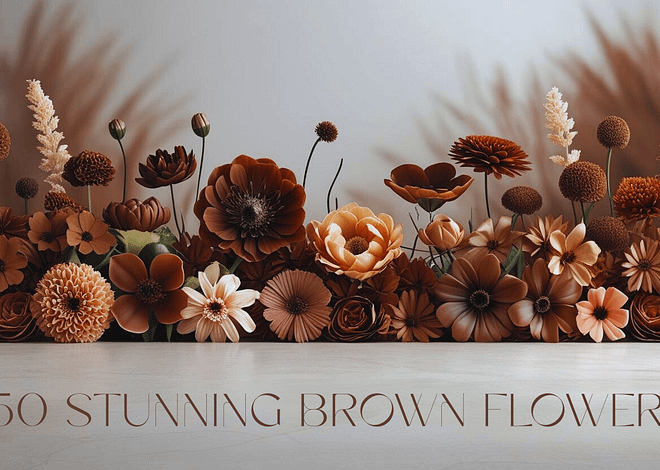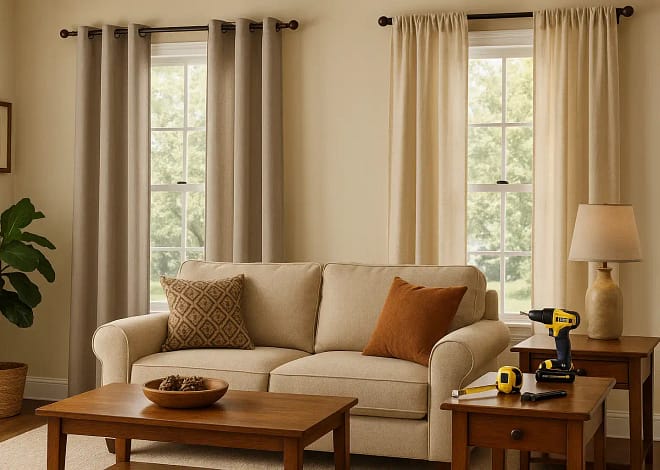
Bird Feeders: Attract Colorful Wild Birds
Hey, bird lover, I’m excited to help you welcome feathered friends into your backyard! With a welcoming habitat and delicious treats, your garden will be fluttering and chirping in no time. Let me share a few tips to get your bird buffet started.
The right bird feeders and seeds are key – different birds have different tastes! Platform feeders suit all kinds of birds, while tube feeders attract little songbirds. Black oil sunflower seeds seem to be a crowd favorite. Mix it up with some nutritious suet cakes, too. Place your feeders near trees or bushes so birds feel safe landing for a snack. Change the food and clean the feeders regularly to keep your birdie guests healthy. Be patient; it may take them a few days to find a new food source. Soon, your yard will be alive with beautiful birds of all colors and sizes. Doesn’t that sound absolutely delightful?
There’s nothing quite like the joy of watching our feathered friends flock to the yard. I’m so glad you’re interested in making your outdoor space a haven for our avian neighbors. Birdwatching and feeding provide a rewarding way to connect with nature at home.
Let me give you a quick tour of the wonderful world of bird feeding. There are so many great options when it comes to bird feeders – you can choose simple tray or hopper feeders or go all-out with a large platform feeder complete with perches. And wait to get me started on the variety of seeds and suet cakes to tempt even the pickiest of chickadees!
Let’s go with a quality feeder and some all-purpose birdseed blend. Sit back and enjoy the show as colorful songbirds discover your new bird cafe. You’ll be amazed at how quickly they find it and how entertaining their antics can be! With a welcoming yard, you’ll soon get to know the unique personalities of your regular feathered visitors.
Choosing the Right Location for Bird Feeders

Now, let’s discuss the best spots to hang your bird feeders. I know you want lots of feathered friends flocking to your yard! When deciding where to put feeders, think about a few key things.
First, make sure you can see the feeders well from inside – watching the birds is half the fun! Also, pick a spot that’s easy for you to get to, so filling the feeders is a breeze.
Now consider cover and wind. Birds like a balance of feeling sheltered yet not too confined. Avoid placing feeders right next to bushes or trees. And point them so prevailing winds blow across, not head on.
One last tip: keep feeders 10-15 feet away from windows and brush. This prevents scary collisions and gives open flight paths.
There you have it! With a little thought about visibility, access, cover, and wind, you’ll create a birdwatcher’s paradise.
Selecting the Best Bird Feeders
When choosing the perfect bird feeder for your backyard, there are a few options to consider. Let’s explore some of the most popular feeder styles that will attract a flock of feathered friends!
Hopper and tube feeders are classics – tried and true designs made of weather-resistant materials like metal or durable plastic. They can hold a generous amount of seed to minimize refills. Platform and suet feeders are great for specific types of food that different birds love.
The ideal feeder for you will depend on your budget, how much maintenance you’re willing to do, and what types of birds you hope to host. An easy-to-clean feeder made of quality materials will serve you well for years. Whichever style you select, take comfort knowing you’re creating a delightful bird buffet! With an inviting feeder and fresh food, your yard will soon become the hot spot for happy birds.
A. Hopper Bird Feeders

These charming hopper feeders are designed to keep feathered friends in mind, filled with their favorite seeds and snacks.
These delightful feeders keep food fresh and dry, shielding it from sun and rain. No more soggy seed for our fine feathered patrons! Refilling and cleaning is a breeze – to make their dining experience as pleasant as possible.
Come perch on the edge and dine to their heart’s content. These hopper feeders provide a cozy, sheltered space to flutter down and enjoy bite after bite. They provide the songs; you will provide the seeds!
a: Classic hopper feeder features
Dear friend, our classic hopper feeders are like a warm embrace for your feathered companions. Their timeless design provides a cozy haven that invites birds to linger and feast. The generous hopper allows you to fill it with a bounty of treats so your fine feathered friends never go hungry. Watch with joy as cardinals, finches, and chickadees gather around this charming feeder that brings out their brightest plumage. The weather-resistant construction protects the food within, while classic wooden accents add rustic beauty to your yard.
When you choose classic hopper feeder, you’re not just buying a feeder but building a home where all are welcome. These feeders offer sanctuary, sustenance, and a place for you to connect with nature’s gentle songbirds. With an array of features designed for comfort and convenience, these classic hoppers have been a backyard staple for generations.
b: Plastic vs metal hopper feeders
Let’s chat about one of the most hotly debated topics among backyard birders – plastic versus metal hopper feeders. I know, I know, it can get pretty intense in the bird-feeding forums! But let’s all take a deep breath and chirp happily together.
At the end of the day, we all just want what’s best for our feathered friends. And the good news is both plastic and metal feeders have their merits. Plastic feeders are typically more affordable and easier to clean. They also come in a variety of fun colors and styles to match anyone’s style. Metal feeders are super durable, though they may ding or rust over time. And, of course, they look classic in any yard.
The most important thing is keeping your feeder clean and filled with fresh seed to provide birds with a healthy meal. So pick the material you like best, go with an easy-to-clean style, and enjoy watching your yard come alive with beautiful birds! Chirp chirp!
B. Tube Feeders

There are some delightful tube feeders out there that your feathered friends will adore. Long, slender tubes with cute little perches and feeding ports are perfect for smaller birds like chickadees, finches, and nuthatches. They can easily cling to the perches while nibbling away. And the tubes drain smoothly, so you don’t have messy drips and spills to clean up. Tube feeders are an easy way to bring joy and sustenance to the precious songbirds that liven up your backyard. With a tube feeder or two, you can provide a cozy birdie buffet that will have them singing your praises!
a: Plastic vs glass tube feeders
Plastic or glass – which bird feeder is best for your feathered friends? Both have their benefits when it comes to keeping those tiny tummies full. Plastic feeders tend to be more affordable and durable, great for attracting larger birds who can really do a number on delicate materials. The clear plastic also gives you a front-row view of the action as birds swoop in for a bite. Glass feeders bring an element of class and beauty to your backyard.
There’s something so charming about seeing seeds perfectly contained behind elegant glass. The smooth surface is easy to clean, too. While glass may chip or shatter if knocked around, it’s a wonderful choice for gentler, smaller birds. Whether you go plastic or glass, you can feel good knowing your feeder provides nourishment and enjoyment. As the birds gather around, listen closely to their happy chirps and songs – it’s their way of saying thank you!
a: Tube feeder ports: size and spacing
Regarding tube feeder ports, size and spacing are super important. You want the ports to be just the right width so your feathered friends can easily access the food inside. But not too wide that it all spills out in a big rush! As for spacing between ports, make sure to leave enough room so multiple birds can perch and eat at the same time. Getting the port proportions just right takes some trial and error. But it’s worth it to see your backyard buddies happily munching away. With a well-designed feeder, you’ll have happy birds and less wasted seed. Let me know if you have any other questions! I’m always happy to chat with birdfeeders.
C. Platform Feeders

Now, when it comes to platform feeders, these handy little trays are flat and open, perfect for holding a variety of bird seeds. Sparrows, finches, doves – they’ll all feel welcome landing on the wide, stable platform to enjoy a nice meal. Platform feeders are so easy to use. Just fill ’em up and watch the birds fly in! And when it’s time to freshen things up, platform feeders are a cinch to clean, too. Their simple design makes them a great choice for beginning birders. With a platform feeder or two outside your window, you’ll be making lots of new feathered friends in no time.
a: Hopper-style vs tray platform feeders
Confused about hopper-style and tray platform bird feeders. I get it; it’s a tough decision. Let’s chat it out!
Hopper-style feeders are those cute little houses with sloped roofs. They’re like mini barns for birds! The seed fills up the entire house, and birds can perch on the roof or fly in through slots on the sides. These are great for keeping seeds dry in rainy weather. The sloped roof sheds water nicely. Birds like chickadees and finches really enjoy hopper feeders.
Tray feeders (platform feeders) are open trays that you fill with seed. They’re usually made of metal mesh or sturdy plastic, with a little roof overhang to keep some rain off. Birds like mourning doves and sparrows flock to these tray-style feeders to fill up. The open platform gives easy access from all angles.
Both styles attract a variety of feathery friends! It comes down to your preference. Hopper feeders have that charming house shape, while tray feeders let you see birds perching out in the open. You can’t go wrong either way. Let me know if you have any other questions! I’m always happy to chat about bird feeding.
b: Covered vs open platform feeders
When it comes to feeding your feathered friends, you’ve got options! Open platform feeders allow easy access for birds of all sizes. They can perch and snack to their heart’s content. But covered feeders have advantages, too. They provide shelter from the elements and help keep seeds dry. Less waste means more bang for your buck! Whichever style you choose, your fine feathered buddies will thank you for serving a tasty meal.
With a variety of feeders, you can make your yard a go-to spot for the neighborhood bird gang to hang out and refuel. They’ll repay you in happy songs and fun antics to watch. So kick back and enjoy the show as your new pals flutter into a feast.
D. Suet Feeders

When you hang a suet feeder in a tree or on a post, it will become a popular pitstop for feathered friends. Chickadees, nuthatches, woodpeckers, and more will start flocking in to nibble on the yummy suet. Watching their bright feathers and lively antics at the feeder will warm your heart.
Installing a suet feeder is one of the easiest and most rewarding ways to invite avian activity into your outdoor space. The birds will thank you for setting up this suet smorgasbord! So why wait? Get a suet feeder today and make your yard the neighborhood hotspot for hungry birds seeking a tasty meal.
a: Suet cage feeders
Imagine a soft flutter of wings as happy birds gather ’round for a tasty meal. Suet cage feeders provide a cozy spot for feathered friends to feast. Craft it with care, each one is designed to bring joy to both birds and birdwatchers alike. The sturdy wire construction keeps curious beaks busy while allowing you an up-close view of nature’s sweet songbirds. Fill these cages with nourishing suet cakes or seed mixes and watch with delight as chickadees, nuthatches, woodpeckers, and more come to call your backyard home. With an array of styles, you’re sure to find the perfect fit for your outdoor space. Hang one today and make your garden a sanctuary for your fine, feathered neighbors.
b: Suet plug feeders
Suet plug feeder, this charming treat can turn any winter day into a lively birdwatching adventure.
Just imagine the flutter of tiny wings as chickadees, nuthatches, and woodpeckers come calling. They’ll cling to the feeder with their tiny paws, pecking away happily at the suet cakes you’ve packed inside. It’s like setting the table for nature’s dinner party!
The suet provides a high-energy meal that helps wild birds survive the cold months. And with a suet plug feeder, refilling is a breeze. Pop in a fresh suet cake when the old one runs out.
With a suet plug feeder outside your window, your yard will come alive with the cheerful chirping of birds feasting. Their bright colors and lively activity will warm your heart all winter long. It’s an easy way to show your care for backyard wildlife. So cozy up with the birds this season, and enjoy the show!
E. Choosing the Best Birdseed
Hey friend, let’s chat about birdseed! I love watching all the colorful little birds flock to my feeder. It makes me smile every time. But did you know that different types of seeds attract different feathered friends? It’s true!
So, when stocking your bird feeders, consider the types of birds you hope to attract. Black oil sunflower seeds are a top choice for pleasing a wide range of birds. Their thin shells make them easy to crack open, and birds love the high fat and protein content. Try mixing in blends containing nuts, fruits, and Nyjer seed for added variety. Safflower seeds attract cardinals, chickadees, finches, and other small birds. And let’s not forget peanuts – jays, woodpeckers, and titmice will happily gobble these up. With the right seed selection, your yard will be bustling with beautiful birds in no time. The treat of seeing these sweet feathered friends up close is sure to lift your spirits.
a: Types of birdseed and what they attract
Here’s a quick observation of some popular picks:
- Sunflower seeds are like bird candy – so yummy! Chickadees, nuthatches, cardinals, and finches will come from miles around for these meaty morsels.
- Safflower is a treat for cardinals in particular. They’ll gobble it up while other birds pass it by. It’s like their secret stash!
- Nyjer seed, tiny and black, is a favorite of dainty finches. They use their nimble beaks to pick out this petite snack.
- Millet is affordable and attracts ground-feeding birds like juncos and doves. They prefer seeds that are small and easy to peck.
There you have it, my bird-loving buddy! A little knowledge about seeds can help you attract a diverse birdie crew to your feeder. Now go fill it up, and let’s do some birdwatching!
b: Birdseed quality: freshness, debris, shells

Let’s talk about what makes for top-quality birdseed. Freshness is key – look for recently harvested seeds with a pleasant, nutty aroma. Avoid old or stale seeds that lack fragrance. Check for debris like bits of twigs or dirt that suggest the birdseed wasn’t thoroughly cleaned. And opt for hulled seeds over those still in their shells, which many birds won’t eat. Choosing fresh, debris-free, and mostly hulled birdseed will give your feathered friends the satisfying, healthy snack they crave. With a little care when selecting, you can be sure your birdseed meets the highest standards for your backyard birds.
Wrapping Note:
We’ve now reached the end of our journey together, exploring the delightful world of bird feeders. I hope you’ve found this enlightening expedition filled with helpful tips for attracting colorful, wild birds into your outdoor space.
As we part ways, remember that with the right bird feeder set up – one that provides birds’ preferred foods, protection from predators, and shelter from the elements – you’re sure to have a front-row seat to nature’s feathered show. The birds will thank you for it!
Whenever you need a mood boost or want to reconnect with the natural world outside your window, take a moment to watch the birds feast and frolic. Their beauty and lively antics are sure to make you smile. Wishing you many happy hours of birdwatching ahead!



